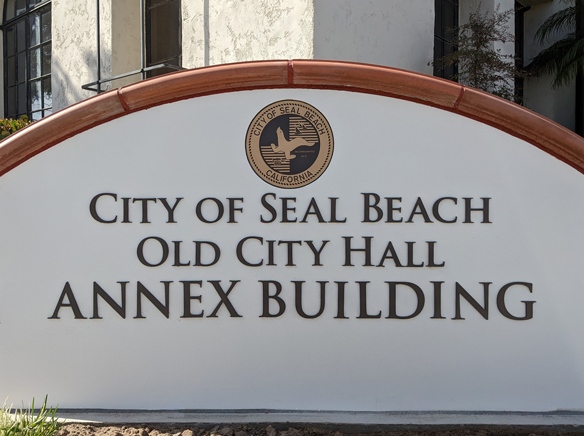First of two parts.
The Seal Beach City Council approved the 2024-25 budget at the Monday, June 24 City Council meeting. The revised budget is balanced, according to the staff report. Due to space limits, the Sun will look at council comments on this subject in the July 4 issue.
The vote came following three budget workshops in May. (Two were scheduled by staff; the third was requested by the council.) According to staff, costs are rising and revenues are expected to be flat. Council members called for the third meeting to discuss additional cuts.
“The baseline Proposed FY 2024-25 Budget included a use of fund balance to offset the increases in expenditures. In response to City Council feedback, an additional workshop was held to present and discuss further balancing measures. These measures included the allocation of City Council discretionary funds to support events such as Christmas Tree and Main Street Decorations, July Fireworks, and Summer Kickoff events, alongside reductions in allocations for training, meetings, and travel,” according to the staff report by Finance Director Barbara Arenado.
The council also approved the cost recovery schedule (also known as the fee schedule) for city services.
“In between comprehensive fee studies, City Council has authorized the City Manager to update annually the fees, charges, rates, and fines based on the annual percentage change in the all-urban Consumer Price Index for Los Angeles-Long Beach-Anaheim, CA (CPI),” Arenado wrote.
As mandated by state law, the council also approved the annual appropriations limit for 2024-25.
The Seal Beach appropriations limit for the new fiscal year is more than $39 million (rounded by the Sun), according to the staff report.
Finally, the council adopted the 2024-25 Statement of Investment Policy.
Background
“The Proposed FY 2024-25 General Fund Budget includes estimated revenues of $44.0 million, operating expenditures of $44.0 million and capital project expenditures of $10.4 million,” Arenado wrote.
“The baseline Proposed FY 2024-25 Budget included a use of fund balance to offset the increases in expenditures,” Arenado wrote.
“In response to City Council feedback, an additional workshop was held to present and discuss further balancing measures,” Arenado wrote.
“These measures included the allocation of City Council discretionary funds to support events such as Christmas Tree and Main Street Decorations, July Fireworks, and Summer Kickoff events, alongside reductions in allocations for training, meetings, and travel,” Arenado wrote.
Later in her report, Arenado discussed some of the city’s long-term financial challenges.
“The state imposes expensive regulations and bureaucracy which takes away funding and local tax revenue from our city,” she wrote.
“We must ensure as much of our local revenue as possible be spent for Seal Beach, which will give us local control of City services and cannot be taken by Sacramento,” Arenado wrote.
“Unfunded mandates and increased costs related to public safety realignment, housing requirements, and regulatory compliance, have placed considerable strain on the City’s General Fund,” Arenado wrote.
“As expenses outpace revenue growth, the City has been forced to make difficult decisions, such as delaying hiring for certain positions, reducing overtime in public safety, and scaling back on maintenance for streets and facilities. However, these measures do not fully address long-term liabilities, such as ongoing facility maintenance and pension obligations,” Arenado wrote.
The budget document raised similar issues.
“In the face of a challenging fiscal landscape, the City has demonstrated resilience by achieving more with limited resources,” wrote Jill Ingram in the “City Manager’s Message” at the beginning of the budget.
“However, the City is grappling with an ongoing structural deficit, necessitating reductions in certain service
levels to mitigate the widening gap between expenses and revenue,” Ingram wrote.
“These measures include deferring hiring for positions across all departments, reducing public safety overtime, cutting back on street maintenance, postponing facility repairs, and scaling back landscape maintenance,” Ingram wrote.
“While these adjustments and cost savings have been made across all departments and expense categories, we’ve also implemented efficiency measures, such as internalizing power washing services to alleviate escalating contract costs, shifting operations at the Tennis and Pickleball Center in-house for cost-effectiveness, and reinstating animal control citations,” Ingram wrote.
Fee schedule changes
The staff report said there were minor changes in the fee schedule that included:
“• Addition of clarifying footnotes and fee descriptions
“• Adjustment of vehicle release fees to more closely align fees to the cost of services provided. Adjusted fees have been compared and are in alignment with fees for similar services within the region.
“• Adjustment of pickleball fees to more closely align to other tennis/racquet related fees. Adjusted fees have been compared and are in alignment with fees for similar services within the region.”





